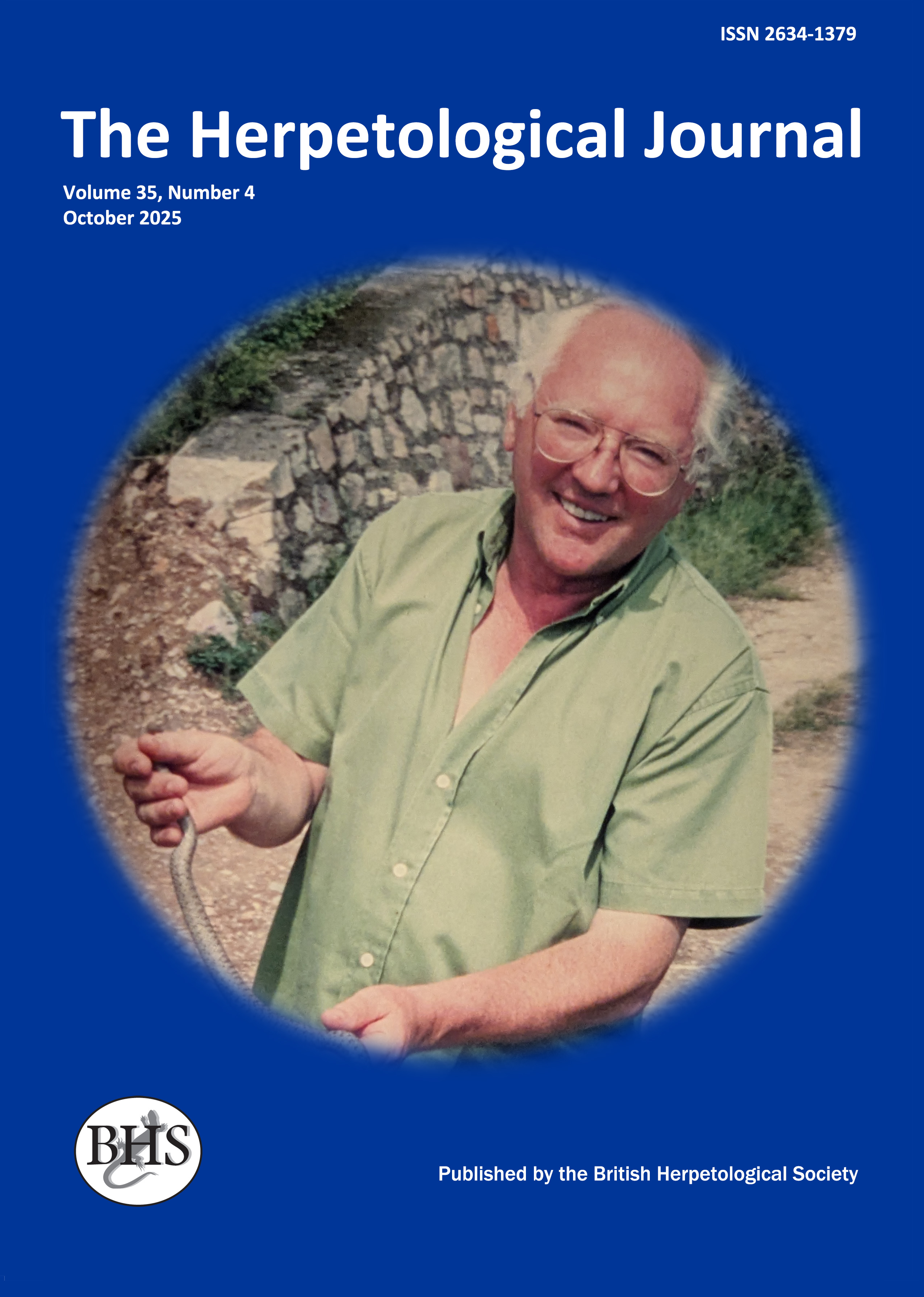
The Herpetological Journal
The Herpetological Journal is the Society's prestigious quarterly scientific journal. Articles are listed in Biological Abstracts, Current Awareness in Biological Sciences,Current Contents, Science Citation Index, and Zoological Record.
ISSN 0268-0130
2023 Impact Factor for the Herpetological Journal is 1.1, with the Journal sitting just below Quartile 2 in Zoology, at percentile 46.9
pdf 01. Dichotomy in morphology of the same genetic lineage of green turtles
1670 downloads
Open Access
DOI: https://doi.org/10.33256/33.2.2533
pp. 25-33
Authors: Bektaş Sönmez, Burcu Mestav, Selma Kırbeci & Şükran Yalçın Özdilek
Abstract: Morphological studies of marine turtles are important to provide insight into changes in their developmental environment. This study aimed to determine green turtles' Chelonia mydas morphological differences within the same genetic lineage in the eastern Mediterranean MED3 management unit and to find the best conversion equations between carapace size. A total of 106 adult green turtles (curved carapace length [CCL] range 79–105 cm) were measured on the five major nesting beaches of the eastern Mediterranean during 2020 and 2021. Morphological differences were tested with PERMANOVA and the relationship among body sizes was tested by linear regression. In the eastern Mediterranean green turtles, the mean CCL and SCL (straight carapace length) were 88.5 cm and 83.5 cm, respectively. There were no statistically significant differences in any of the examined morphological characteristics of green turtles collected from five nesting beaches. In the clustering analysis, however, it was found that all the turtles fell into two distinct groups: larger (> 95.2 cm) and smaller (< 85.2 cm) turtles. As well, the conversion equations between CCL and SCL showed a high coefficient of determination (R2 = 0.938). We suggest that the conversion equations may be applied to all green turtles belonging to this population and nesting in the eastern Mediterranean.
Keywords: Chelonia mydas, morphology, conversion equation, K-means, eastern Mediterranean

